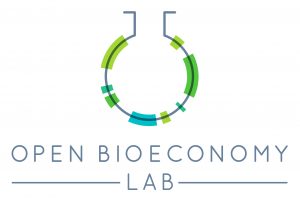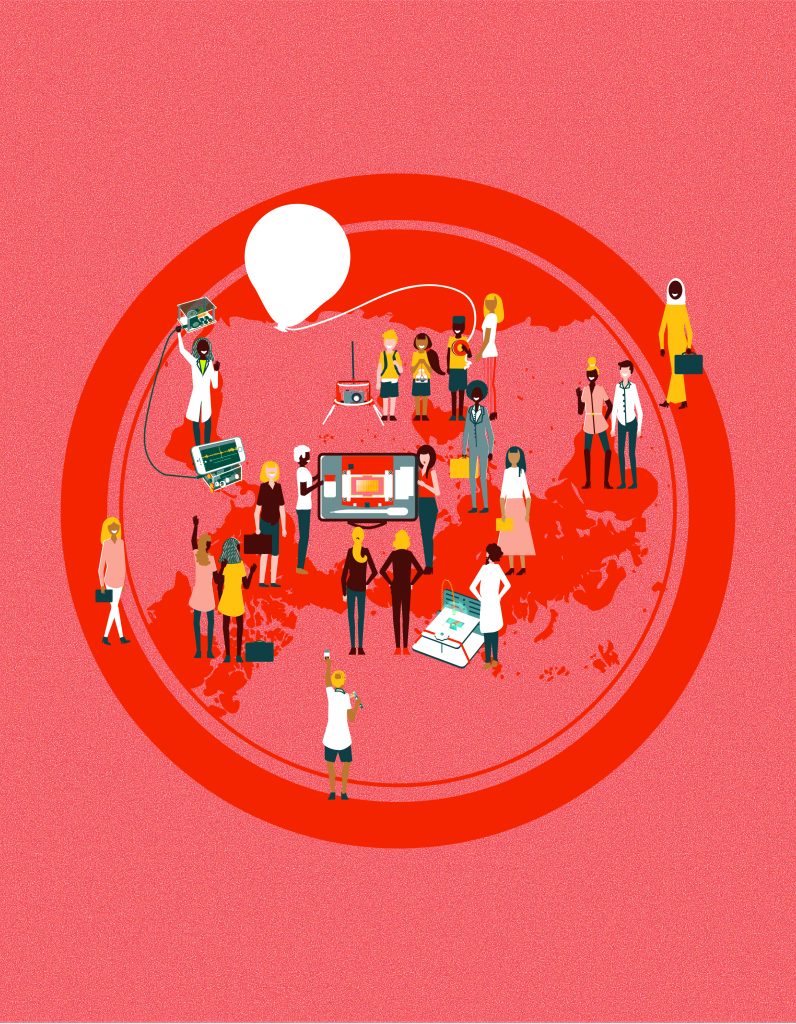Written by: Jenny Molloy (University of Cambridge), Juan Pedro Maestre (University of Texas, Austin)
Experimental science is typically dependent on hardware: equipment, sensors and machines. Open Science Hardware means sharing designs for this equipment that anyone can reuse, replicate, build upon or sell so long as they attribute the developers on whose shoulders they stand. Hardware can also be expanded to encompass other non-digital input to research such as chemicals, cell lines and materials and a growing number of open science initiatives are actively sharing these with few or no restrictions on use.
A growing number of academics are developing and using open hardware for research and education in addition to sharing their papers, data and software through broader open research practices. This brought a large cohort to the Gathering for Open Science Hardware (GOSH) in Shenzhen China during October 2018, an four day event which convened over 110 of the most active users and developers of open science hardware from 34 countries and multiple backgrounds including academia, industry, community organising, NGOs, education, art and more. PLOS kindly supported an unconference session during GOSH 2018 where students and researchers shared the following opportunities and challenges to boosting open science hardware in an academic context and planned a course of action to forward the goal of the Global Open Science Hardware Roadmap to make open science hardware ubiquitous by 2025.
Opportunities for open science hardware in academia
Open science hardware has some important intrinsic benefits. Firstly, it can reduce the cost of research, democratising opportunity and enabling limited budgets to stretch further. Joshua Pearce of Michigan Tech University has calculated a return on investment of hundreds to thousands of percent for funders of open hardware through a drastic reduction in lab costs. Secondly, it reduces duplication of effort by building on the work of others and thirdly, it provides opportunities to customise hardware to suit your optimal experimental design, rather than designing your experiment to fit the limitations of available hardware. Moreover, sharing more details of experimental designs facilitates replicability in science. This is needed more than ever given current lack of trust towards science in some societal contexts and fears within several scientific communities of a “reproducibility crisis”.
Gaining additional credit, citations and collaborations are all significant potential opportunities for academics developing open science hardware and are necessary to incentivise those activities. However, cultural change is required within existing systems of academic publication and reward to realise the opportunities. Change is coming, for example the recently established Journal of Open Hardware and HardwareX encourage formal publication of research advances and designs that well documented and appropriately licensed, while the PLOS Open Source Toolkit channel highlights and rewards open hardware publications. We know that open approaches can reap rewards but there is room for further evidence in the hardware context. Open access publications and shared datasets can confer a citation advantage and many projects developing open research tools projects report high numbers of collaborations and significant funding that may not have been possible without their culture of sharing. The Structural Genomics Consortium is involved in publishing over two papers per week, partially a result of hundreds of collaborations through making data and tools freely available. Research funders can be responsive to openness as a strategy to maximise impact: UK-based research centre OpenPlant was awarded £12m to make open technologies for plant synthetic biology and two open source projects on diagnostics for infectious diseases were awarded >£1m from the UK’s Global Challenges Research Fund.
Educational use of open science hardware also reaps both tangible and intangible benefits for universities. It represents an opportunity to increase the quality of teaching and learning by providing access to instruments that would otherwise be too expensive in the numbers required for effective teaching. It also contributes to building critical thinking skills and breaking open the “black box” of laboratory equipment. There are many academics in the GOSH Community involving their students directly in developing open science hardware, such as air quality sensors at the University of Texas Austin or biological instrumentation through the Biomaker Challenge in Cambridge. Still others such as the Centro de Tecnologia Acadêmica at UFRGS in Brazil are using open hardware tools extensively in student lab practicals and research projects.
Challenges to address if open science hardware is to become ubiquitous
There are several barriers to wider adoption of open science hardware in academia. One stumbling block is institutional buy-in and support: in these times of limited funding, many universities have become conservative about approaches to intellectual property and patenting of inventions. Encouraging an open approach to maximising societal and scientific impacts through technology and knowledge transfer requires a compelling narrative. This includes reassurance that openness is contextual. In some cases the traditional route of IP protection and restrictive licensing may be optimal to achieve intended outcomes, in others it is not and open approaches should be considered a strategic option. It is also important to emphasise that open does not equal non-commercial. Indeed there are many examples of entrepreneurial academics and companies spinning off to sell open hardware back into academia but also to industry, non-profits, educational institutions and directly to the public.
Funding for ongoing support and scaling of open science hardware efforts is a perennial and important topic of discussion at GOSH. In the case of open science hardware, private investors may not consider open designs as maximizing profit opportunities but they can still be profitable and generate significant social and scientific returns. A major task for the GOSH academic working group formed at the unconference session is therefore to compile justification for a diverse range of funders including private philanthropists, social impact investors and venture funds to support open science hardware and further the goal of making it ubiquitous and widely used by 2025.
The final topic of discussion during our session was creating awareness among the scientific community both online and offline at major scientific conferences. Offering community-level incentives, support and guidelines to document and share open science hardware is feasible and there is much low-hanging fruit. However, we have seen in other areas of open research that to obtain ubiquity these community efforts need to be backed by formal incentives and rewards. In other words, the value of open approaches has to be recognised in decisions around funding, promotions and hiring decisions.
Furthering open science hardware through community action
Four priority actions emerged which correspond closely to recommendations in the Global Open Science Hardware Roadmap: i) leverage the GOSH Community and network to produce guidance and case studies for universities, funders and other stakeholders; ii) put open science hardware on the agenda at large disciplinary conference; iii) raise awareness through mainstream academic channels; and iv) take the initiative within our own institutions to experiment with ideas and build local communities.
We invite anyone who are interested in open science hardware to join this work to ensure that more researchers, students and those outside of academia have access to vital enabling technologies for science. You can sign the GOSH manifesto, join the GOSH Forum to share your projects and contact organizers@openhardware.science for more information.
Acknowledgements
Many thanks to PLOS for their kind support enabling people in need of financial support to attend GOSH and to the participants in the unconference session: Juan Pedro Maestre (University of Texas, Austin), Pierre Padilla (UPCH), Andre Chagas (University of Sussex), Jenny Molloy (University of Cambridge), Moritz Riede (University of Oxford), Benjamin Pfaffhausen (Freie Universität Berlin), Marina de Freitas (CTA-UFRGS), Minerva Castellanos Morales (Scintia), Tobias Wenzel (EMBL), Anne-Pia Marty (University of Geneva), Alex Kutschera (Technical University of Munich), Eduardo Padilha (University of São Paulo).


